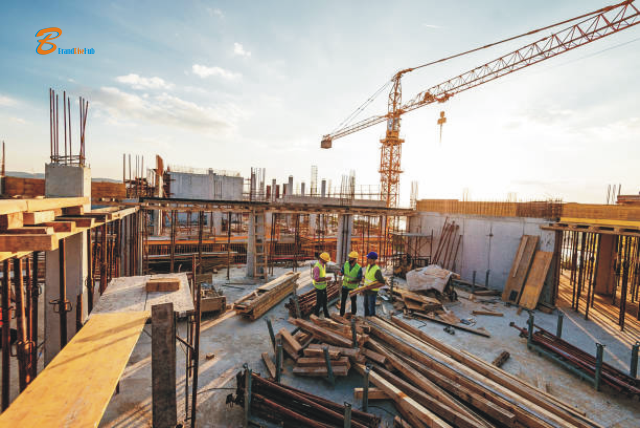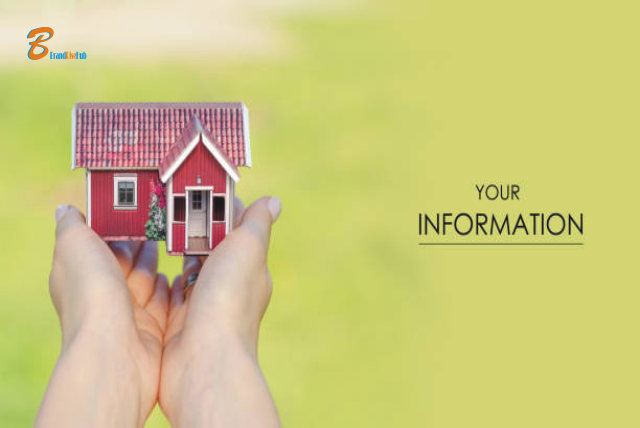Innovative Construction Materials for Modern Homes | Building Future 2024
“Innovative construction materials for modern homes are the game-changers in the world of construction. These revolutionary materials are reshaping the industry by offering a fresh perspective on building homes. They’re not just materials; they’re the future. With features like durability, eco-friendliness, and energy efficiency, they’re setting new standards for construction. Transparent wood is incredibly strong and can replace traditional glass. Self-healing concrete can mend itself. These materials make construction more resilient and sustainable. They’re not just meeting the demands of the modern world; they’re exceeding them. These materials are essential. They help create homes we all dream of. Such homes are both cutting-edge and environmentally responsible.”
Contents
- 1 Innovative Construction Materials for Modern Homes: Solving Past Problems?
- 1.1 Transparent Wood
- 1.2 Carbon Fiber
- 1.3 SensiTiles
- 1.4 Self-Healing Concrete
- 1.5 Aerogel
- 1.6 Richlite
- 1.7 Liquid Granite
- 1.8 Bending, Flexible Concrete
- 1.9 Transparent Aluminum
- 1.10 Laminated Wood
- 1.11 Hydroceramics
- 1.12 CABKOMA Strand Rod
- 1.13 Flexicomb
- 1.14 Passive Cooling Paint
- 1.15 Bio-Coal Lining
- 1.16 Hemp Reinforcement
- 1.17 Martian Concrete
- 1.18 Factor’s
- 1.19 FAQ’s
- 1.19.1 Q1. What are innovative construction materials, and why are they important for modern homes?
- 1.19.2 Q2. How do innovative materials contribute to energy efficiency in modern homes?
- 1.19.3 Q3. What are some examples of innovative construction materials used in modern home construction?
- 1.19.4 Q4. Are innovative construction materials environmentally friendly?
- 1.19.5 Q5. How can I incorporate innovative materials into my modern home design?
- 1.19.6 Q6. Do innovative construction materials cost more than traditional materials?
- 1.19.7 Q7. Can innovative materials be used for both interior and exterior applications in modern homes?
- 1.19.8 Q8. What are the durability and maintenance considerations for innovative construction materials in modern homes?
- 1.19.9 Q9. Are there government incentives for using innovative construction materials in modern homes?
- 1.19.10 Q10. How can innovative construction materials enhance the aesthetics of modern homes?
- 1.20 SUMMARY
- 1.21 Share this:
- 1.22 Like this:
Innovative Construction Materials for Modern Homes: Solving Past Problems?
Innovative Construction Materials for Modern Homes are solving past problems. They offer sustainable, efficient, and cost-effective solutions. These solutions address long-standing challenges in the construction industry. These advancements are shaping the future of construction and making buildings more environmentally friendly, durable, and energy-efficient.
Transparent Wood
This revolutionary material is a sustainable alternative to traditional glass, offering strength, low thermal conductivity, and high optical transmittance.
Carbon Fiber
Carbon fiber is known for its exceptional strength-to-weight ratio. It is being used to reinforce various building materials. This innovation makes structures more robust and lightweight.
SensiTiles
These innovative decorative acrylic tiles react to touch, light, and movement, adding a dynamic and interactive element to architectural design.
Self-Healing Concrete
This material incorporates capsules with adhesive liquids or fibers into the concrete mix. These capsules allow the concrete to repair cracks automatically. This process increases its durability and reduces maintenance costs.
Aerogel
Often called the world’s lightest material, aerogel is an excellent thermal insulator, ideal for energy-efficient insulation in construction.
Richlite
Richie is made from recycled paper pressed into hard panels. It is Eco-friendly, durable, and versatile. This makes it an excellent material for various construction applications.
Liquid Granite
This unique “liquid” stone mixture provides a durable and attractive finish for surfaces like concrete, brickwork, and stone.
Bending, Flexible Concrete
Innovations like ConFlexPave and geopolymer composites have increased concrete’s flexibility. They have enhanced its load-bearing capacity. These advancements make concrete more durable and suitable for various applications.
Transparent Aluminum
Resistant to extreme conditions, transparent aluminum is used for impact-resistant windows, domes, and other transparent architectural elements.
Laminated Wood
Solid wood panels, including cross-laminated timber, offer a sustainable and strong construction material with excellent fire resistance.
Hydroceramics
This composite facade material is designed to cool buildings by absorbing and releasing water. This process makes it a green alternative for reducing energy consumption.
CABKOMA Strand Rod
These lightweight and earthquake-resistant carbon fiber composite rods are used for seismic reinforcement in construction.
Flexicomb
This material draws inspiration from honeycomb structures. It is created by combining polypropylene tubes into a flexible matrix. This makes it ideal for decorative lighting elements.
Passive Cooling Paint
This “whitest paint in the world” reflects sunlight and can act as an air conditioner, cooling indoor spaces more efficiently.
Bio-Coal Lining
Made of biochar from forest and agricultural waste, this material captures carbon. It is used in various construction applications. These range from facades to furniture.
Hemp Reinforcement
Hemp-reinforced concrete is an eco-friendly alternative to traditional steel reinforcement, offering similar strength and durability without the corrosion issues.
Martian Concrete
Designed for construction on Mars, this material uses sulfur and Martian soil to create strong, fast-setting concrete for extraterrestrial structures.
Factor’s
- Sustainability: Innovative construction materials play a crucial role in making modern homes more environmentally friendly. Many of these materials are designed to reduce the carbon footprint of construction, utilizing renewable resources, and promoting energy efficiency.
- Durability: Modern homes should stand the test of time. Innovative materials often offer greater durability, which means fewer maintenance and repair costs for homeowners. They are engineered to resist wear and tear, weathering, and other factors that can degrade traditional building materials.
- Energy Efficiency: Innovative construction materials can enhance the energy efficiency of modern homes. They provide better insulation and reduce heat loss. They also optimize energy usage. This results in reduced utility bills and a more comfortable living environment.
FAQ’s
Q1. What are innovative construction materials, and why are they important for modern homes?
Ans. Innovative Construction Materials for Modern Homes are advanced materials designed to enhance the quality, durability, and sustainability of modern homes. They play a crucial role in improving energy efficiency. These materials help in reducing environmental impact. They also increase structural strength. This makes them vital for creating comfortable and eco-friendly living spaces.
Q2. How do innovative materials contribute to energy efficiency in modern homes?
Ans.Innovative Construction Materials for Modern Homes, such as energy-efficient insulation and glazing solutions, help regulate temperature and reduce energy consumption. They create well-insulated building envelopes. These envelopes keep homes warmer in winter and cooler in summer. This results in lower utility bills and a reduced carbon footprint.
Q3. What are some examples of innovative construction materials used in modern home construction?
Some examples are transparent wood, which is used for sustainable windows. Another example is aerographite, suitable for lightweight and strong structural components. Self-healing concrete is also an example; it extends the lifespan of building elements. These materials offer improved performance and durability.
Q4. Are innovative construction materials environmentally friendly?
Ans. Many innovative Construction Materials for Modern Homes are eco-friendly. They can be recycled, require fewer resources during production, and contribute to reducing greenhouse gas emissions. Choosing such materials for modern homes supports sustainability and reduces the environmental impact of construction.
Q5. How can I incorporate innovative materials into my modern home design?
Ans. To include Innovative Construction Materials for Modern Homes, consult with architects and contractors experienced in sustainable building practices. They can help you select appropriate materials and ensure they meet the design and functionality requirements of your home.
Q6. Do innovative construction materials cost more than traditional materials?
Ans. Initially, some innovative materials may have a higher upfront cost. However, their long-term benefits, such as energy savings and reduced maintenance, often outweigh the initial investment. Additionally, as these materials become more common, their prices are likely to decrease.
Q7. Can innovative materials be used for both interior and exterior applications in modern homes?
Ans. Many innovative Construction Materials for Modern Homes are versatile and suitable for both interior and exterior use. For example, transparent wood can be used for windows, and pollution-absorbing bricks can be integrated into interior and exterior walls.
Q8. What are the durability and maintenance considerations for innovative construction materials in modern homes?
Ans. Innovative Construction Materials for Modern Homes are often designed to be durable. They are low-maintenance. This reduces the need for frequent repairs or replacements. However, specific care instructions may vary depending on the material used, so it’s essential to follow the manufacturer’s recommendations.
Q9. Are there government incentives for using innovative construction materials in modern homes?
Ans. Depending on your location, the government may offer incentives for sustainable home construction. You might receive tax credits or rebates for using innovative materials in your modern home. Check with local authorities or green building programs to explore available incentives.
Q10. How can innovative construction materials enhance the aesthetics of modern homes?
Ans. Innovative Construction Materials for Modern Homes are not only functional but also offer unique design possibilities. These materials can enhance modern home aesthetics by providing innovative textures, finishes, and architectural elements. They set your home apart from traditional designs. They also maintain a contemporary and eco-friendly appeal.
SUMMARY
In today’s rapidly evolving construction industry, the choice of materials can greatly influence the quality of modern homes. It can also impact sustainability and energy efficiency. Innovative Construction Materials for Modern Homes have emerged as a game-changer. They address the challenges of the past. They also shape the homes of the future. These advanced materials are designed to enhance the durability, comfort, and eco-friendliness of contemporary living spaces.
These materials range from transparent wood for sustainable windows to self-healing concrete. These innovations extend the lifespan of building elements. They offer improved performance and environmental benefits. Some innovative Construction Materials for Modern Homes may have an initial cost. However, they often yield long-term savings through energy efficiency and reduced maintenance. Incorporating these materials into your home design can contribute to a greener and more sustainable lifestyle. Whether you want to improve energy efficiency or reduce your carbon footprint, these materials can help. If your goal is to create unique modern aesthetics, innovative construction materials are essential. They are crucial for building the homes of the future.










One Comment